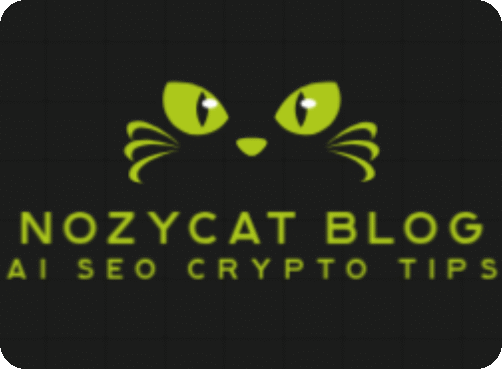Specialized gig platforms are online marketplaces that focus on connecting freelancers with clients within a specific industry, skill set, or niche. Unlike general freelance platforms that cater to a broad range of services, these specialized platforms often offer more curated talent pools, industry-specific tools, and a deeper understanding of the unique needs of both freelancers and clients in that particular area. This specialization can lead to more relevant job opportunities for freelancers and more qualified candidates for clients.
Thank you for reading this post, don’t forget to subscribe!
Please support the blog by clicking ads and join the monetize programs , coming soon.
Here are 5 examples of specialized gig platforms:
Toptal:

This platform specializes in connecting clients with top freelance talent in technology, including software developers, designers, and finance experts. They are known for their rigorous screening process, ensuring that only highly skilled professionals are accepted into their network. This makes it a go-to platform for companies seeking top-tier tech talent. For example, a startup looking for a senior React developer might use Toptal to find experienced candidates who have been thoroughly vetted for their technical abilities.
Dribbble:

This platform is a hub for designers and creative professionals to showcase their portfolios, get feedback, and find job opportunities. It’s heavily focused on visual design, including graphic design, UI/UX design, illustration, and animation. Companies looking for designers often browse Dribbble to discover talent with a specific aesthetic or style. For instance, a marketing agency needing a unique set of social media graphics might search Dribbble for illustrators with a portfolio that aligns with their brand.
nDash:

This platform is tailored for freelance writers and content creators. It connects businesses with writers who have expertise in specific industries and topics. nDash emphasizes direct communication between clients and writers, allowing for better collaboration and understanding of project requirements. A company needing a series of blog posts about cybersecurity might use nDash to find writers with a background in technology and demonstrated knowledge of the subject.
99designs:

This platform focuses specifically on graphic design services. It offers different ways for clients to find designers, including design contests where multiple designers submit concepts, and direct hiring of individual designers. This platform is popular for businesses needing logos, websites, branding materials, and other visual assets. A new business looking for a logo design might launch a contest on 99designs to receive various creative options from different designers.
Care.com:

This platform specializes in connecting individuals and families with caregivers, including nannies, babysitters, senior caregivers, pet sitters, and housekeepers. It caters to a very specific set of service needs related to care. Families looking for a part-time nanny in Alexandria could use Care.com to find local caregivers with relevant experience and qualifications.
It was here some day, but today it is not. May be keep a tag and come back later time. Here are some alternatives to Care.com for caregivers:
- Sittercity: This platform is similar to Care.com, but it focuses more on childcare and pet sitting.1 It has a large database of caregivers and allows families to search for caregivers based on their needs and preferences.
- UrbanSitter: This platform is also similar to Care.com, but it focuses on urban areas. It has a large database of caregivers and allows families to search for caregivers based on their needs and preferences.
- Rover: This platform is specifically for pet sitting and dog walking. It has a large database of pet sitters and dog walkers and allows pet owners to book services online.
- TaskRabbit: This platform is for a variety of tasks, including pet sitting, dog walking, and errands. It has a large database of taskers and allows customers to book services online.
- Facebook groups: There are many Facebook groups for caregivers. These groups can be a great way to find work and connect with other caregivers.
Here are some additional tips for caregivers who are looking for work:
- Network with other caregivers. Other caregivers can be a great source of information about job openings.
- Get involved in your community. Volunteer at a local school or community center. This is a great way to meet people and get your name out there.
- Word-of-mouth. Tell your friends, family, and neighbors that you are looking for work. They may know of someone who is looking for a caregiver.
- Create a website or social media profile. This is a great way to showcase your skills and experience.
I hope this helps!
General benefits of working in specialized gig platforms
Working on specialized gig platforms offers several distinct benefits for freelancers and also project managers as well. Following are some of that benefits for both parties:
More Relevant Opportunities:
These platforms attract clients specifically seeking the skills and expertise offered within that niche. This means freelancers are more likely to find projects that align with their abilities and interests, reducing the time spent sifting through irrelevant job postings. For instance, a video editor specializing in short-form content will find more suitable opportunities on a platform like CreatorUp compared to a general freelance marketplace.
Higher Earning Potential:
Due to the specialized nature and often the need for expert-level skills, clients on these platforms may be willing to pay higher rates compared to general platforms where competition can be more intense. Platforms like Toptal, focusing on top-tier tech talent, often command premium pricing.
Curated Talent Pool:
Being part of a specialized platform often means being in a network of other highly skilled professionals in your field. This can lead to collaboration opportunities, knowledge sharing, and an enhanced professional reputation. Dribbble, for example, fosters a community of designers who inspire and learn from each other.
Industry-Specific Tools and Resources:
Some specialized platforms offer tools and resources tailored to the specific industry, which can streamline workflows and enhance the quality of work. For example, a platform for voice actors might provide audition tools and script management features.
Stronger Community and Networking:
Specialized platforms often foster a stronger sense of community among freelancers in the same field. This can lead to valuable networking opportunities, referrals, and support from peers who understand the nuances of the industry.
Increased Credibility:
Being accepted onto a specialized platform, especially those with a vetting process like Toptal, can enhance a freelancer’s credibility and make them more attractive to potential clients. It acts as a form of pre-qualification.
Better Client Matching:
The platform’s focus on a specific niche often leads to better matching between freelancer skills and client needs, resulting in smoother project execution and higher client satisfaction.
In summary, specialized gig platforms can provide freelancers with access to more targeted and higher-paying opportunities, a community of peers, industry-specific resources, and enhanced credibility within their area of expertise.
Challenges of life on specialized gig platforms
Life can easy on talents, but on these wide spread marketplaces, one has to be very popular and gifted too as well as flexible in time and cost. Here are some of the general barriers on specialized gig platforms:
Limited Scope of Opportunities:
While specialization offers relevant gigs, it inherently limits the overall pool of available jobs compared to general platforms. If demand within the niche fluctuates or is smaller, freelancers might find fewer opportunities.
High Competition within the Niche:
Because these platforms attract professionals with specific skills, there can be intense competition among freelancers with similar expertise. Standing out requires a strong portfolio and effective self-promotion.
Platform Dependency:
Freelancers become reliant on the success and traffic of that specific platform. Changes in the platform’s algorithms, fees, or policies can directly impact their ability to find work.
Niche Market Fluctuations:
Demand for specific skills within a niche can change rapidly due to technological advancements or industry trends. Freelancers need to continuously adapt their skills to remain relevant.
Potential for Lower Volume:
Depending on the niche, the overall volume of available projects might be lower compared to broader categories on general platforms.
Keeping Up with Industry Standards:
In specialized fields like technology or design, standards and best practices evolve quickly. Freelancers need to invest time and resources in continuous learning to stay competitive on these platforms.
Platform Vetting Processes:
The word vetting a freelancer is like minting new coins in the market. Some specialized platforms, like Toptal, have rigorous screening processes. While beneficial for credibility, these can be challenging and time-consuming for freelancers to pass.
Cost of Each of the Top 5 Examples:
It’s important to note that the “cost” for freelancers on these platforms typically comes in the form of service fees or commissions charged on earnings, rather than upfront membership fees in most cases. These fees can vary. Here’s a general overview based on available information as of today, April 8, 2025:
- Toptal:
- Freelancer Cost: Toptal generally does not charge freelancers a direct membership fee. Instead, they take a margin on the rate they bill clients. The exact percentage or fee structure isn’t always publicly disclosed and can vary. However, due to their focus on premium talent, freelancers on Toptal often command higher rates, which can offset any indirect costs.
- Dribbble:
- Freelancer Cost: Dribbble offers both free and paid “Pro” memberships. The free version allows freelancers to showcase their work but with limited features. Paid Pro memberships (which have different tiers with varying features like more uploads, larger attachments, and the “For Hire” badge) have monthly or annual subscription fees. As of late 2024/early 2025, these could range from around $5 to $15 per month depending on the plan and billing frequency.
- nDash:
- Freelancer Cost: nDash does not typically charge freelancers a membership fee. Instead, they usually take a commission from the writer’s earnings on completed projects. The exact percentage can vary but is often around 15-20%.
- 99designs:
- Freelancer Cost: 99designs operates with a tiered system for designers based on their skill level and performance. Higher-level designers typically pay a lower platform fee. These fees are a percentage of the earnings from projects. For example, new designers might start with a higher commission rate (e.g., 20-30%), which can decrease as they earn more and improve their ranking on the platform. Clients also pay a platform fee.
- Care.com:
- Freelancer Cost: Caregivers on Care.com can create a basic profile for free. However, to access premium features like being able to directly contact families and be featured in search results, they typically need to pay for a subscription. These subscription costs vary depending on the plan and duration, but as of early 2025, monthly fees could range from approximately $20 to $40.
It’s crucial for freelancers to carefully review the specific terms and fees of each platform before signing up to understand the costs involved and how they will impact their earnings. Platform fees and structures can change over time.
Specialised gig platforms for project owners
Yes, specialized gig platforms typically charge the project owner (the client or business hiring the freelancer) for the work completed by the freelancer. This is how the platforms generate revenue and sustain their operations.
Here are the common ways specialized gig platforms charge project owners:
- Service Fees or Commissions: This is the most common model. The platform charges the project owner a percentage of the total project cost or the freelancer’s rate. This fee is usually added on top of the agreed-upon price with the freelancer. For example, a platform might charge the client a 10-20% service fee on the total payment made to the freelancer.
- Transaction Fees: Some platforms might charge a fixed fee for each transaction or payment made to a freelancer, regardless of the project size.
- Subscription Fees: In some cases, especially for platforms targeting businesses, there might be a subscription fee for accessing the platform’s features, including the ability to post projects and hire freelancers. This could be a monthly or annual fee.
- Value-Added Services: Platforms might offer premium features or services to project owners for an additional cost, such as enhanced search capabilities, dedicated account management, or tools for managing larger teams of freelancers.
Examples of how the top 5 specialized gig platforms might charge project owners:
- Toptal: Toptal typically works by providing clients with vetted top-tier talent.1 They set the rates for their freelancers and charge the client an all-inclusive rate, which includes their margin. The client pays Toptal, and Toptal then pays the freelancer. The specific markup isn’t always transparent but is factored into the rate presented to the client.
- Dribbble: For project owners looking to hire designers, Dribbble offers a “Hire” feature.2 While browsing portfolios is free, contacting designers for potential work might involve certain features that are part of their Pro plans for businesses, which have subscription costs. Project owners might also pay a fee for using specific job posting or talent sourcing tools.
- nDash: nDash primarily charges clients a service fee on top of the rate they agree upon with the freelance writer. This fee covers the platform’s operational costs and the value it provides in connecting clients with relevant writing talent.
- 99designs: 99designs has different pricing structures depending on how a client engages with designers (e.g., design contests vs. direct hire). In design contests, the client pays for the winning design, and 99designs takes a portion of that payment. For direct hires, similar to other platforms, they typically charge a service fee on the payments made to the designer.
- Care.com: Care.com generally charges families a subscription fee to access and contact caregivers on their platform.3 This fee allows families to browse profiles, read reviews, and directly communicate with potential hires.
It’s important for project owners to carefully review the pricing structure of any specialized gig platform they are considering to understand all the associated costs. These fees are a crucial part of how these platforms operate and provide value to both freelancers and clients.






Leave a Reply